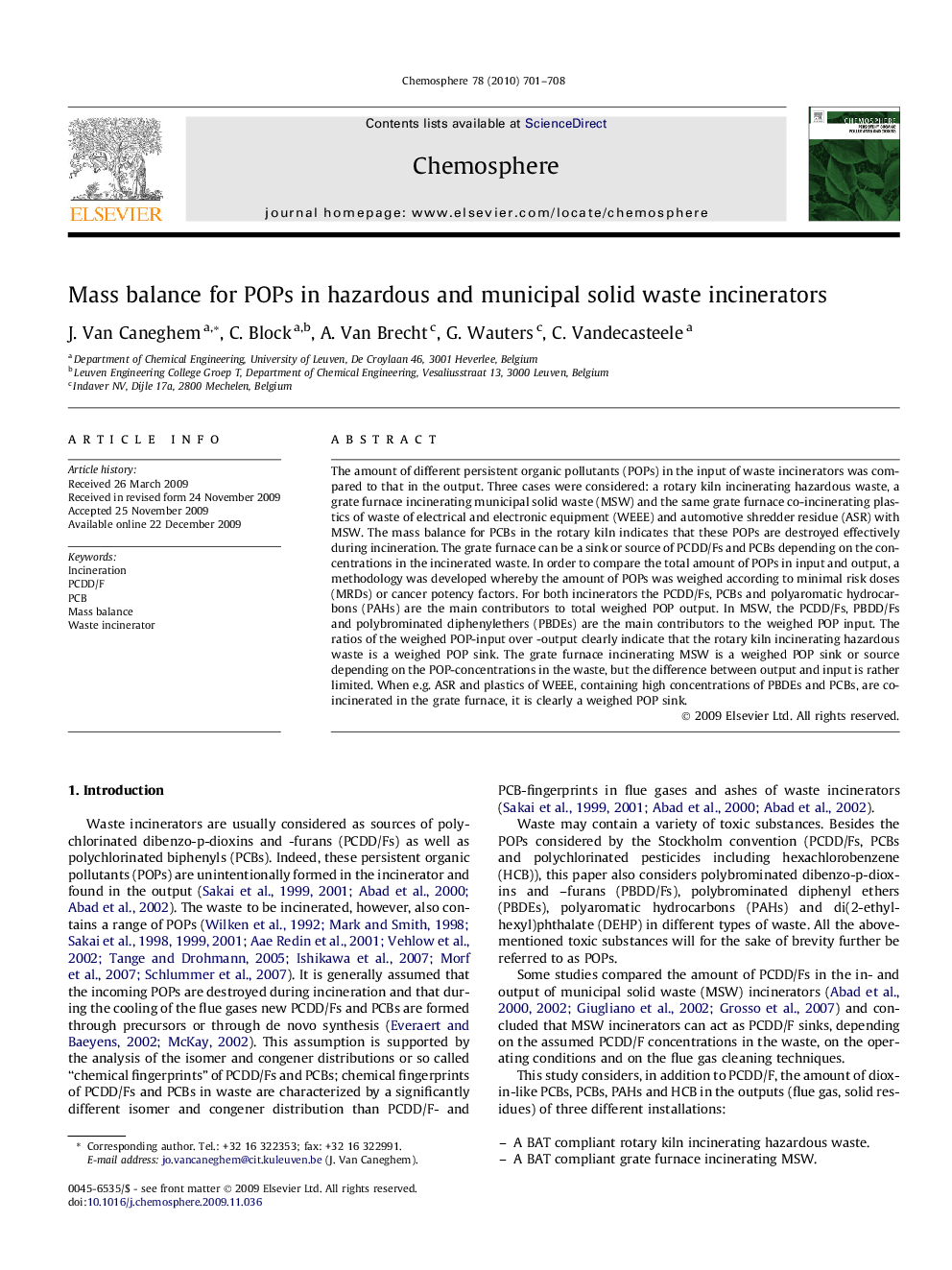| Article ID | Journal | Published Year | Pages | File Type |
|---|---|---|---|---|
| 4412178 | Chemosphere | 2010 | 8 Pages |
The amount of different persistent organic pollutants (POPs) in the input of waste incinerators was compared to that in the output. Three cases were considered: a rotary kiln incinerating hazardous waste, a grate furnace incinerating municipal solid waste (MSW) and the same grate furnace co-incinerating plastics of waste of electrical and electronic equipment (WEEE) and automotive shredder residue (ASR) with MSW. The mass balance for PCBs in the rotary kiln indicates that these POPs are destroyed effectively during incineration. The grate furnace can be a sink or source of PCDD/Fs and PCBs depending on the concentrations in the incinerated waste. In order to compare the total amount of POPs in input and output, a methodology was developed whereby the amount of POPs was weighed according to minimal risk doses (MRDs) or cancer potency factors. For both incinerators the PCDD/Fs, PCBs and polyaromatic hydrocarbons (PAHs) are the main contributors to total weighed POP output. In MSW, the PCDD/Fs, PBDD/Fs and polybrominated diphenylethers (PBDEs) are the main contributors to the weighed POP input. The ratios of the weighed POP-input over -output clearly indicate that the rotary kiln incinerating hazardous waste is a weighed POP sink. The grate furnace incinerating MSW is a weighed POP sink or source depending on the POP-concentrations in the waste, but the difference between output and input is rather limited. When e.g. ASR and plastics of WEEE, containing high concentrations of PBDEs and PCBs, are co-incinerated in the grate furnace, it is clearly a weighed POP sink.
